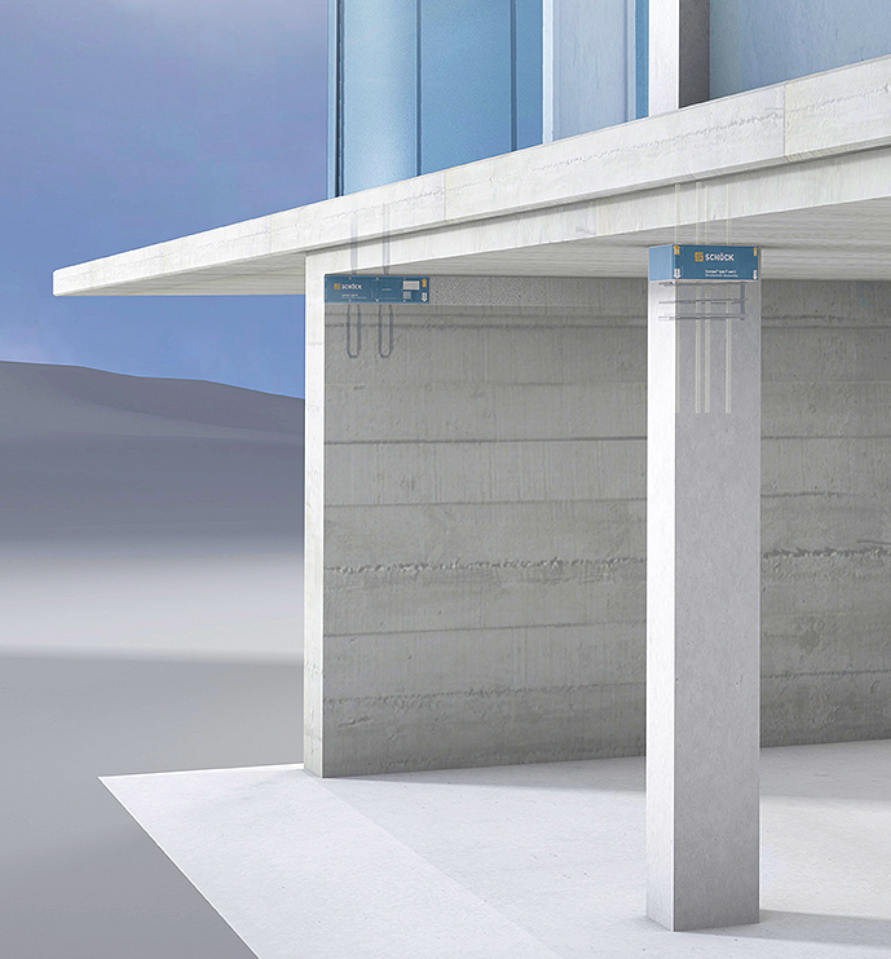Over six decades Schöck has built a formidable international reputation for innovative and progressive product design. The company is best known for its range of Isokorb structural thermal breaks, but its pioneering reinforcement technology and impact sound insulation solutions are also a significant part of the product portfolio. Innovation though is not always about original product development. The Schöck philosophy of rethinking existing product capabilities can lead to derivative technology and the new Sconnex product range is a perfect example. It offers outstanding insulation performance, combined with an exceptional load-bearing capacity.
Closing the last major thermal bridge
Type W, for insulating the thermal bridge at the base, or the top of the reinforced concrete wall; type P for insulating the column head and eliminating the need for flank insulation; and type M, a capillary barrier that insulates at the base, or the top, of a masonry wall. With these ingenious high quality solutions, the company has transferred its Isokorb expertise in balcony technology to walls and columns. But what necessary development steps and which building physics obstacles had to be overcome for the concept to become an approved component?
Building physics and expert analysis
The main focus of the 2050 building policy guidelines is to reduce energy losses and a critical area is the thermal performance of the building envelope, through a fabric first approach. Sconnex contributes significantly to meeting such a challenging and vital sustainable concept. About 40% of all thermal bridges in a building are caused by walls and columns, resulting in around 10% of heating energy losses.
So the objective was to be the first company to develop a component for wall and column connections that both minimises thermal bridges and makes external insulation unnecessary. However, bringing a major new product to market requires extensive due diligence. First, building physics analysis confirmed the solution as being realistic in its practical implementation. Then, extensive expert opinions were prepared for the German Institute for Construction Technology (DIBt), where all mandatory legal requirements, including 90 minute fire resistance, were met. Because of the variance from practiced construction methods, Schöck also involved scientists from the University of Darmstadt. With groundbreaking innovations, Schöck often teams with specialists from universities and high-profile engineering firms in the development of calculation models. In one dissertation, an empirical design proposal was created for the application of the connection element in construction practice, based on extensive experimental studies on its load-bearing behaviour. Schöck test results were also incorporated and the design proposal ratified by expert opinion.
Total assurance for architects and planners
By introducing Sconnex, Schöck has met the needs of the construction industry in maximising the reduction of thermal bridges involving walls and columns. Architects and planners can be assured that the Sconnex product family sets new standards for energy-efficient construction in the 21st century; and those who have already incorporated the products into their projects are enthusiastic about the new design freedom, the planning safety and the economically achievable results for the client.
For further information on the new Sconnex product range contact Schöck on 01865 290 890; or download the brochure at www.schoeck.com
Major innovative new solution from the ever progressive Schöck
| T | (01865) 290 890 |
|---|---|
| F | (01865) 290899 |
| E | design-uk@schoeck.com |
| W | Visit Schöck's website |
| Staniford House, 4 Wedgwood Road, Bicester, Oxfordshire, OX26 4UL |




 resized-comp212922.jpg)